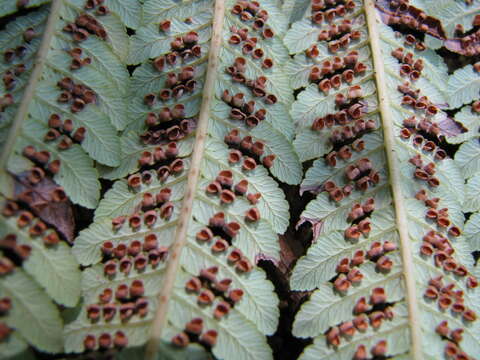Cibotium glaucum

Description:
Hpuu or Hpuu puluCibotiaceaeEndemic to the Hawaiian Islands (All the main islands except Niihau and Kahoolawe)Oahu (Cultivated)Sori (spore cases) opened and released its spores.The pulu, the soft woolly material around the base of the fronds, was used by early Hawaiians for dressing wounds and embalming bodies.Hawaiians, both long ago as well as more recent times, ate the uncoiled fronds (fiddles), which were considered delicious when boiled. The starchy core, though, was famine food. But it was considered the most important food in lean times and one trunk may contain 50-70 pounds of almost pure starch. It was prepared by peeling the young fronds or placing the entire trunk with the starchy center in an imu or in steam vents at the volcano. The saying was "He hpuu ka ai he ai make" (If the hpuu is the food, it is the food of death).EtymologyThe generic name Cibotium is from the Greek kibotion, diminutive of kibotos, a box or casket, in reference to the indusium, a part of the fern blade that covers the sorus (spores).The specific name is from Latin glaucus, bluish green or gray, in reference to the underneath color of the fronds, as can been seen on the above photo.NPH00004www.nativeplants.hawaii.edu/plant/view/Cibotium_glaucum
Included On The Following Pages:
- Life (creatures)
- Cellular (cellular organisms)
- Eukaryota (eukaryotes)
- Archaeplastida (plants)
- Chloroplastida (green plants)
- Streptophyta
- Embryophytes
- Tracheophyta (ferns)
- Polypodiopsida
- Cyatheales
- Cibotiaceae
- Cibotium (manfern)
- Cibotium glaucum (Hapu'u pulu)
This image is not featured in any collections.
Source Information
- license
- cc-by
- copyright
- David Eickhoff
- photographer
- David Eickhoff
- original
- original media file
- visit source
- partner site
- Flickr Group
- ID


